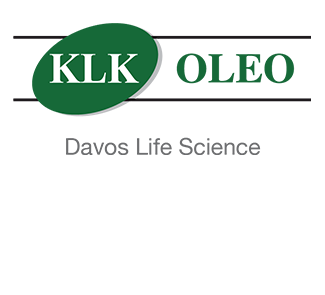Each year, more research is being conducted on vitamin K2. In fact, in just the past year I’ve personally had two scientific reviews on vitamin K2 published in peer-reviewed journals. The first one examined vitamin K2’s cardiovascular roles, and the second reveals the prevalence of vitamin K2 deficiency/insufficiency. Here I’ll provide an overview of the research I presented in two peer-reviewed articles. But before jumping right into this recently published research, let’s take a quick look at some background information regarding vitamin K.
Background
Discovered in 1929, vitamin K was originally identified for its role as a blood-clotting (coagulation) cofactor.1 In the 1970s, vitamin K-dependent proteins (VKDPs) were discovered, which led to a more comprehensive understanding of vitamin K’s role with respect to bone and cardiovascular health.2
Additionally, two forms of this fat soluble vitamin exist: vitamin K1 and K2. Plants synthesize phylloquinone (aka, vitamin K1), and intestinal microbiota synthesizes a range of K2 forms collectively referred to as menaquinones.3 The menaquinones have a number designation according to the number of repeating 5-carbon units in its side chain. For example, if there are seven repeating 5-carbon units, the designation will be menaquinone-7 or MK-7.4 Among the menaquinones, the MK-7 form of vitamin K2 has had the most significant research behind it, supporting is value in human health.
The Cardiovascular Benefits of Vitamin K2
In the July/August 2015 issue of the journal Agro Food Industry Hi Tech,5 my co-author and I discussed research showing that the primary way in which vitamin K acts to promote cardiovascular health is by inhibiting calcification in the arteries—which would otherwise lead to atherosclerosis. Specifically, some of the seventeen VKDPs have been identified to date act as calcification inhibitors. These include osteocalcin (OC), also known as bone Gla protein (synthesized by osteoblasts) and matrix Gla protein (MGP, found in cartilage, bone, and soft tissue, including blood vessel walls). These proteins are local inhibitors of calcification in the tissues in which they exert their function.
We also discussed the population-based Rotterdam study,6 which included 4807 subjects, and which provided the first evidence for a link between vitamin K and vascular health. The results showed the relative risk of coronary heart disease mortality and calcification of the aorta (an artery in the heart) was reduced in those with high intakes of vitamin K2, compared to those with a lower intake. The intake of vitamin K1, however, was not associated with these same cardiovascular benefits. Another study7 with 564 post-menopausal also showed a decreased risk of coronary calcification with higher intakes of vitamin K2, but not vitamin K1.
In a three-year, double-blind, placebo-controlled trial, 248 postmenopausal women received 180 mcg/day of MK-7 (MenaQ7) or a placebo for three years to examine the effect on arterial stiffness (i.e. caused by calcification). The results were that supplementation with MK-7 significantly decreased measures of aortic stiffness, and improved undercarboxylated VKDPs by 50 percent.
Vitamin K2 Deficiency/Insufficiency
In the January 2016 issue of the Journal of Human Nutrition & Food Science,8 I discussed research suggesting that recommendations for vitamin K2 be increased to 180 mcg/day for adults, up from its current adequate intake levels of 90-120μg/day for women and men, respectively. The basis for this includes that facts that vitamin K:
• Has poor bioavailability from food
• Has low circulation in the blood
• Is quickly metabolized and excreted
• Has low tissue stores
• Levels are often measured by an inadequate method
The Food and Agriculture Organization of the United Nations estimates that the absorption of vitamin K from boiled spinach (a good source of vitamin K) is no greater than 10 percent. Furthermore, relatively small amounts of vitamin K circulate in the blood compared to the other fat-soluble vitamins, with about 70 percent being excreted in the feces and urine from an oral dose of vitamin K1.
Due to its rapid metabolism, circulating vitamin K levels is not dependable as measures of vitamin K status. Currently, prothrombin time (a measure of how long it takes blood to clot) is typically used to assess vitamin K status, but this is not routinely done except in individuals who take anticoagulants or have bleeding disorders. The problem is that changes in vitamin K intakes have rarely been shown to alter prothrombin time. Hence, prothrombin time is not really an effective way to measure vitamin K status. Rather, a much better method is to measure circulating levels of specific undercarboxylated VKDPs, such as undercarboxylated MGP and undercarboxylated OC. Higher levels reflect of either of these reflect lower levels of vitamin K.
In a study of 452 men and women (age range 60–80 years), undercarboxylated MGP was measured. Results showed that 97 percent had notable measures of undercarboxylated MGP, suggesting vitamin K deficiency or insufficiency. When supplemented with vitamin K, there was a significant reduction in undercarboxylated MPG. Furthermore, research in healthy adults show that undercarboxylated MPG increase with age, with a significant rise seen above age 40. This suggests that vitamin K levels decrease with age. The U.S. Food and Nutrition Board established the adequate intake (AI) levels of vitamin K for adults 19 years and older of 120 mcg/day for men and 90 mcg/day for women—but this may be inadequate. Research has shown that vitamin K2 (especially MK-7) has advantages of vitamin K1, and that MK-7 is well absorbed. Furthermore, research has shown that 180 mcg/day of vitamin K2 as MK-7 reduced arterial stiffness (caused by calcification) and decreased the age-related decline in bone mineral content and bone mineral density. Consequently, it seems reasonable to suggest that recommendations for vitamin K2 (as MK-7) be increased to 180 mcg/day for adults.
Vitamin K Safety
There is no known toxicity associated with high doses of the vitamin K1 or K2 (although the same is not true for synthetic vitamin K3, menadione). Consequently, no tolerable upper level (UL) of intake has been established for vitamin K1 or K2 by the Food and Nutrition Board, Institute of Medicine or by the World Health Organization. Moreover, long-term high dosage therapy with vitamin K is not associated with increased thromboembolic events and no elevated event rate was recorded even with 45 mg (that’s milligrams, not micrograms) vitamin K2 (MK-4) daily for three years in 2185 postmenopausal osteoporotic women. Currently, vitamin K antagonist medications (i.e. coumarins) are the only contraindications for patients using vitamin K2, although novel anticoagulant (NOAC) drugs may be used concomitantly. Consequently, the recommendation of 180 mcg/day vitamin K2 as MK-7 is well within safety ranges. VR
References:
1 Food and Nutrition Board, Institute of Medicine: Vitamin K, Chapter 5, in Dietary Reference Intakes for Vitamin A, Vitamin K, Arsenic, Boron, Chromium, Copper, Iodine, Iron, Manganese, Molybdenum, Nickel, Silicon, Vanadium, and Zinc. National Academy Press, Washington, District of Columbia, USA (2001).
2 Ferland, G. “The discovery of vitamin K and its clinical applications”, Ann. Nutr. Metab., 61(3), 213-218 (2012).
3 Shearer, M.J. “Vitamin K”, Lancet, 345(8944), 229-234 (1995).
4 Booth, S.L. “Vitamin K: food composition and dietary intakes”, Food Nutr. Res., 56, 5505 (2012).
5 Maresz K, Bruno EJ. Vitamin K2: An Essential Protector for Cardiovascular Health. Agro Food Ind Hi Tech 2015;26(5):21-24.
6 Geleijnse, J.M., Vermeer, C., Grobbee, D.E., et al. “Dietary intake of menaquinone is associated with a reduced risk of coronary heart disease: The Rotterdam Study”, J. Nutr., 134, 3100-3105 (2004).
7 Beulens JW, Bots ML, Atsma F, Bartelink ML, Prokop M, Geleijnse JM, Witteman JC, Grobbee DE, van der Schouw YT. “High dietary menaquinone intake is associated with reduced coronary calcification”, Atherosclerosis 2009;203(2):489-493.
8 Bruno EJ. The Prevalence of Vitamin K Deficiency/Insufficiency, and Recommendations for Increased Intake. J Hum Nutr Food Sci. 2016;4(1):1077.
Gene Bruno, MS, MHS, the dean of academics for Huntington College of Health Sciences, is a nutritionist, herbalist, writer and educator. For more than 30 years he has educated and trained natural product retailers and health care professionals, has researched and formulated natural products for dozens of dietary supplement companies, and has written articles on nutrition, herbal medicine, nutraceuticals and integrative health issues for trade, consumer magazines and peer-reviewed publications. He can be reached at gbruno@hchs.edu.








